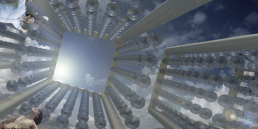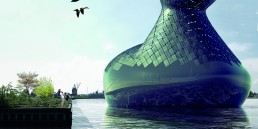GRID Slide
Submission to the 2014 Land Art Generator Initiative Copenhagen design competition
Artist Team: Morten Rask Madsen, Julie Trier Brøgger, Julie Rindung, Natalia Guerrero Gutiérrez, Artis Kurps, Kevin Bailey, Søren Laurentius Nielsen, Per Møller, Jesper Ahrenfeldt, Tobias Thomsen
Artist Location: Copenhagen, Denmark
Energy Technologies: algae biofuel
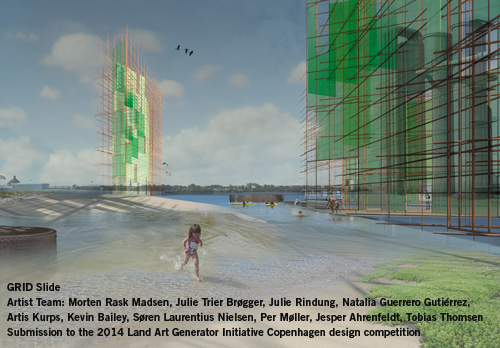
GRID Slide creates renewable energy for the grid based on farming micro algae. GRID Slide’s real potential, however, lies in creating diversity and value from waste products by returning them into circulation.
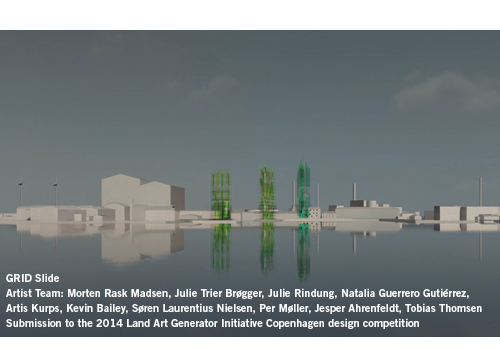
GRID Slide is also a landscape sliding between land and ocean, transformed by the changing water levels of the sea around Copenhagen. It is a recreational landscape skirting urbanity and nature, landscape, farming, and industrial production.
Three long, slim structures rise 50 meters above an engineered wetland, interacting with the industrial skyline in the background. Seen from the Little Mermaid, the sleek towers contrast with the chimneys behind. From downtown Copenhagen, the structures appear as translucent screens, in contrast to the massive walls of the old B&W assembly building.

Changes in the sea level activate floating pumps that press algae-filled water into the towers. Through the force of gravity, the colored algae liquid is distributed into the towers’ bioreactors. The towers expose the algae to the sun’s light and enable photosynthesis.
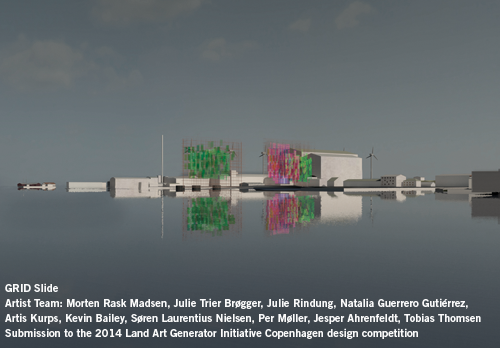
Microalgae are fed with nutrients in the form of wastewater and CO2 collected locally from the Lynetten treatment plant and from Amager Power Station. The algae purifies the water while its volume increases up to six-fold during the day. The energy-rich product is collected as gasification feedstock for a 2.5 MW generator located in the bottom of the eastern tower—visible to visitors but enclosed by glass screens. Byproducts of the production cycle include phosphorus, potassium, and recalcitrant carbon, which have many commercial applications, including fertilizer.

